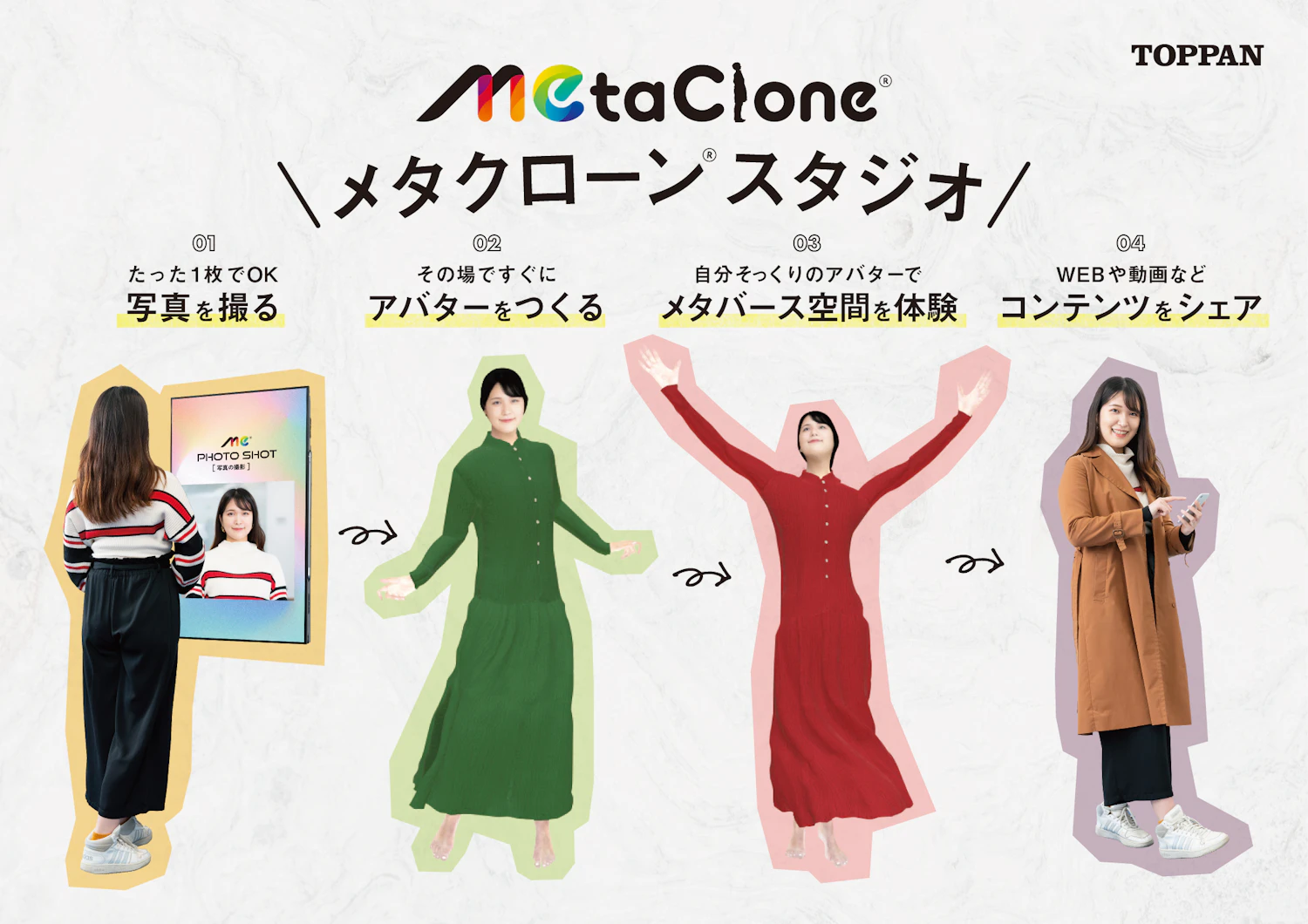12.26FRI
Realistically Reproduce the Texture & Movement of the Fabric when Worn! TOPPAN Inc.'s "MetaClone® Studio"

TOPPAN Inc. is a long-established comprehensive printing company founded in 1900, operating based on "printing technology." In 2021, the company developed and released a service that can generate a 3D avatar from a photo, "MetaClone®Avatar." In April 2023, they began providing "MetaClone®Studio," which offers virtual fashion experiences at stores and event venues.
What kind of service is MetaClone® Studio? We asked Zhang Ping, General Manager of the MiraVerze Business Development Department at TOPPAN Inc. about the overview, reactions, and future developments of the service.
PROFILE

Zhang Ping
TOPPAN Inc.
MiraVerze Business Development Department, General Manager
Faithfully Reproducing the Texture and Movement of Fabric with MetaClone® Studio
First, could you tell us about the overview of the MetaClone® Studio service developed by your company?
MetaClone® Studio generates an avatar with the user's face, photographed at the store or venue, in a virtual space that represents a company or brand. It's a PR package that readily provides experiences like "the unique worldview of a company or brand" and "virtual fitting" to users. By using MetaClone® Studio, it is possible to strengthen PR activities at stores and venues and to promote fashion items through virtual fitting experiences.This article is for members only.
Please register to read the rest of the article.
What you can do with a membership
- Read members-only articles
and use text-to-speech. - Unlimited article favourites
and browsing history. - Attend members-only events.
- Get the latest information
with our email newsletter.
CONCEPT VIDEO
"fashion tech news" Unveils New Logo & Concept Video
TOP ARTICLES
RELATED ARTICLES
CONCEPT VIDEO
"fashion tech news" Unveils New Logo & Concept Video
CONTACT
If you have any questions or enquiries, please enter your details in the form below.

















.png?w=400&fm=webp)


